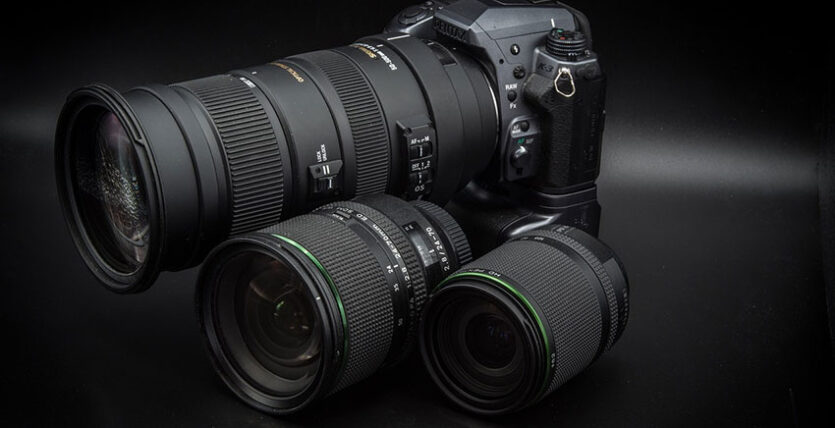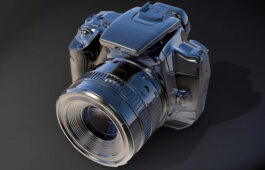What Is the Telephoto Lenses in Photography?
Numerous photography techniques have been developed over time to further enhance the fascination of photography. Telephoto lenses in photography always play a prominent role. As you know, there are several types of camera lenses and professional photographers use them for different purposes.
Telephoto lenses are also often used by professional photography when they have to capture objects that are in the distance. Moreover, the particular camera lenses which come with a more long focal length help photographers to bring the objects in closer so that the images can be even more descriptive.
The more you can learn about telephoto lenses, the better you can use them in order to capture stunning photographs on a large scale.
What Is a Telephoto Lens?
In short, telephoto lenses are specialized camera lenses that often come in wildlife photography by professional photographers out there. What telephoto lenses do is, it brings the objects even closer for the photographers so that they can capture the images in a more descriptive manner.
Moreover, the telephoto lens makes the most use of the long focal length feature which is supposed to zoom the captured objects. However, using the telephoto lens won’t affect the quality of the captured images. And so, you don’t need to worry about the fact.
The internal lens group prominently comes into play for telephone lenses. Now due to the group, the images you are supposed to capture will come with compact designs. But there are people who consider focal length in a physical distance which is not always right. Rather, the focal length is the measurement of optical properties.
How Does a Telephoto Lens Work?
Unlike a telescope’s long, unwieldy tube, a telephoto lens achieves its impressive magnification with a clever internal design. Imagine a team effort – the first group of lenses acts like a magnifying glass, a convex dome that bends incoming light rays inwards, focusing them closer together.
This initiates the magnification process. But here’s the twist: the second group of lenses throws a curveball. These lenses, often one or more, act like a counterbalance, spreading the light rays back out after they’ve been bunched together.
Crucially, this diverging group doesn’t completely undo the convergence; instead, it increases the distance the now-converged light rays travel before reaching the camera’s sensor. It’s like using a magnifying glass to focus sunlight on a piece of paper, then strategically placing another lens to hold the paper further away – you maintain the magnified image but within a more manageable setup.
By manipulating the light path with this ingenious two-group system, the telephoto lens effectively increases the focal length (the distance between the lens and the sensor) without needing a ridiculously long physical lens barrel.
This design is similar to how a zoom lens works, but in a telephoto lens, the specific arrangement and power of these groups are optimized for achieving a long focal length in a compact form. While the technical details can get intricate, this internal teamwork is what allows a telephoto lens to bring distant subjects dramatically closer, all within a photographer-friendly size.
What Are the Benefits of Telephoto Lens?
Well, you should always use a camera lens based on your needs. Now if you can make the most out of the telephoto lens, this is supposed to bring you a good number of benefits. And that’s why professional photographers around the world are using the lens.
Photographers find telephoto lenses to be the best zoom tool because they can capture faraway scenes with incredible clarity. With a telephoto lens, you can get closer to your subject without actually being there. The brilliance of a telephoto lens can be seen in its ability to capture the minute details of a soaring bird or the force of a football player’s kick from a distance. However, it goes beyond distance.
You can really isolate your topic with these lenses. They eliminate background features that can be distracting by reducing the field of vision. This enables you to take photographs with gorgeously blurred backgrounds so that the person is the only focal point. Even telephoto lenses have an original twist.
They distort the background so that distant objects appear closer together. This can significantly alter sceneries, bringing far-off mountains into closer focus and creating a view that is more compelling. Many telephoto lenses have zoom options, giving you even more freedom. Optimally compose your composition without changing lenses—ideal for catching action-packed moments in sports photography. With the help of telephoto lenses, you may take pictures with a bit of creative flare and exhibit the world’s details from a distance.
How To Choose the Right Telephoto Lenses in Photography?
Choosing the right telephoto lens hinges on what you want to capture. The key factor is focal length, measured in millimeters (mm). Longer focal lengths (typically above 200mm) bring distant subjects closer, ideal for wildlife or sports photography. For these applications, consider lenses exceeding 400mm, and be prepared for a heavier lens and the potential need for a tripod for stability.
For portraiture, something shorter like an 85mm lens can achieve a flattering compression effect, pleasingly blurring the background. If you value versatility, a zoom lens offers a range of focal lengths, but these often have a wider aperture (letting in less light) compared to fixed-focal length lenses (prime lenses).
Prime lenses are a wonderful option for photographers on a tight budget or for low light conditions because they are typically sharper and more reasonably priced. Aperture, another crucial aspect, is denoted by f-stops.
Lower f-stops (like f/2.8) allow more light, but come at a premium. Consider your shooting conditions: wildlife in low-light might necessitate a wider aperture, whereas bright outdoor portraits allow for a smaller one. Finally, factor in weight and size. Telephoto lenses can be bulky, so if portability is important, a lighter zoom option might be the better compromise.



